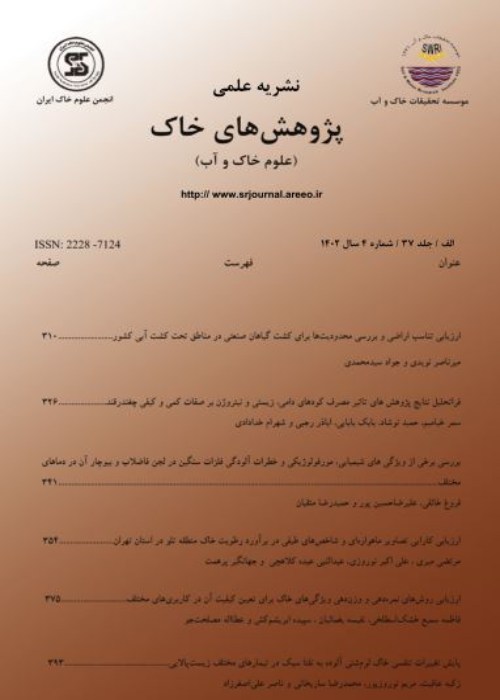Comparing Some Physicochemical and Microbial Indices of Soil in Different Years after Fire in Zagros Forests in Paveh County
With increase in fire frequency in the Zagros forests, long term and short term evaluation of soil quality is very important. In this study, changes in some physico-chemical and microbial properties of soils were compared in short, medium and long-term after fire. For this purpose, three post-fire treatments were selected and labeled as TSF=1, TSF=3 and TSF=10 years after fire. In the nearest neighbor of each fire treatment a relevant unburned area was selected as the control and labeled as C1, C3 and C10, corresponding to the post-fire treatments. Soil sampling was performed from the depth of 0-20 cm in 4 replications. Overall, 24 composite soil samples were collected for post-fire treatments and their relevant controls. Some physicochemical and microbial properties were measured in soil samples. Results showed no changes in soil texture. Soil saturated moisture decreased for TSF=1, while it was recovered for TSF=3 and TSF=10. Soil bulk density decreased both in TSF=1 and TSF=3, while no changes were observed for TSF=10 compared to C10. There was a significant increase in soil pH, CEC, EC, and P for TSF=1 compared to C1. However, for TSF=3 and TSF=10, pH and CEC were recovered to the pre-fire level and soil P and EC were significantly lower than their controls. Soil organic carbon and N remained significantly lower than their control in all treatments. No significant change was observed in soil C:N ratio in any treatment. Microbial carbon biomass significantly decreased for TSF=1 compared to C1, while no significant changes were observed for TSF=3 and TSF=10 compared to C3 and C10, respectively. Soil induced respiration increased significantly for TSF=1, while it decreased significantly for TSF=3 and TSF=10 controls. Soil basal respiration significantly decreased in all post-fire treatments compared to their controls. Metabolic quotient significantly increased for TSF=1 and TSF=3, however, it recovered in TSF=10 to the pre-fire level. There was a significant decrease in microbial quotient for TSF=1, however, it increased significantly for TSF=3 and recovered to the pre-fire level for TSF=10. All the treatments were significantly discriminated using multivariate analysis (discriminant analysis). It was concluded that EC, N, CEC, and P were the most important physicochemical properties while microbial biomass carbon, basal and induced respiration, and microbial quotient were the most important microbial properties of soil for discriminating treatments.
- حق عضویت دریافتی صرف حمایت از نشریات عضو و نگهداری، تکمیل و توسعه مگیران میشود.
- پرداخت حق اشتراک و دانلود مقالات اجازه بازنشر آن در سایر رسانههای چاپی و دیجیتال را به کاربر نمیدهد.



